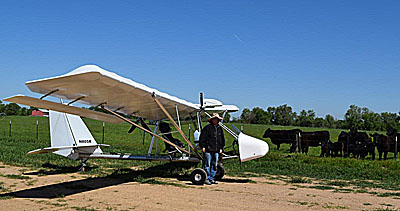
Pitman Air recently gained FAA acceptance for a work-capable aircraft called Dragonfly Rancher.
You may not know this Dragonfly airplane but I do. Very well. Since before it was called Dragonfly, I followed the development of this unusual aircraft by Bobby Bailey. You probably don’t know him either but he’s one of the most inventive light aircraft designers. A man of very few words, he prefers to create than to talk about it.
Dragonfly is an important icon in the hang gliding community. This aircraft was purpose-built to tow hang gliders aloft. At a place near Sun ‘n Fun called Wallaby Ranch, this happens nearly every day of the year. Proprietor Malcolm Jones founded “the Ranch” in 1992. He has a fleet of Dragonflys that he uses to tow up experts, students learning to fly, or almost anyone wanting to get an introduction to hang gliding.
Dragonfly has been fantastically productive, towing so many thousands of flights that I doubt they could be accurately counted. Malcolm alone reports doing more than 30,000 flights with a student …safely, by the way.
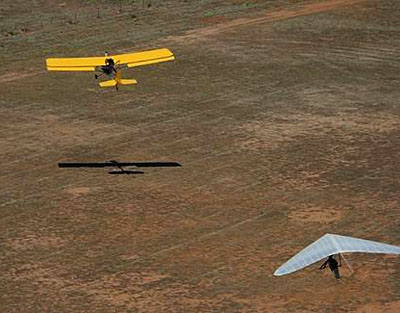 Some Dragonfly pilots working at the Ranch have more than 10,000 hours logged in Dragonflys alone. All that is achieved in an intense, full-power flight towing a hang gliding on a 200 or so foot line to 2,500 feet then releasing the glider, abruptly powering back to idle thrust, and diving madly for the ground to snatch another waiting pilot into the air. A round-trip takes literally minutes so think about how many takeoffs and landings were involved for a pilot to log 10,000 hours doing so.
Some Dragonfly pilots working at the Ranch have more than 10,000 hours logged in Dragonflys alone. All that is achieved in an intense, full-power flight towing a hang gliding on a 200 or so foot line to 2,500 feet then releasing the glider, abruptly powering back to idle thrust, and diving madly for the ground to snatch another waiting pilot into the air. A round-trip takes literally minutes so think about how many takeoffs and landings were involved for a pilot to log 10,000 hours doing so.
During some competition events, I have seen 11 Dragonflys doing this drill. It is nearly mind-blowing to watch a collection of these awkward-looking aerial tractors whizzing this way and that in an utterly chaotic-looking yet amazingly well-choreographed ballet of tow planes and glider pilots. You literally have to see it to belief it. My words to describe it pale in comparison.
Dragonfly Grows Up
Dragonfly was designed to fly slowly. A hang glider cannot be towed safely at speeds much above 30-35 mph. Dragonfly can stall below 20 mph. It has elephant-ear-sized flaperons, a large empennage, and Vne was 55 mph on the first models. As I said: purpose-built to tow hang gliders.
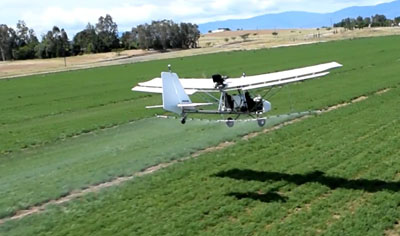
Ed Pitman, a longtime hang glider pilot turned aircraft manufacturer, recently gained approval for a Dragonfly Rancher model as a Special LSA. “Got both 900 & 582 series Dragonfly Ranchers approved SLSA yesterday,” he wrote, taking after Bobby in being frugal with words. I pried a few more from him.
“We reworked the Dragonfly to make it more pilot friendly to the GA market and targeted farmers and ranchers, by making it a tax-deductible piece of farm equipment.” Under current regs a farmer can use such a flying machine for his own fields. “However,” Ed added, “second and third world countries are interested in it for commercial crop dusting.”
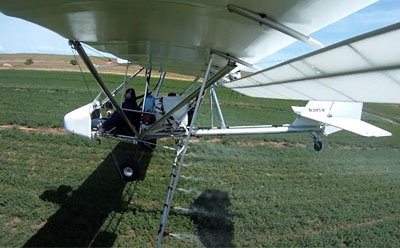
“Vne on Dragonfly was 66 mph (upped from those earlier models) and Rancher goes further, to 88 mph Vne.” The newly beefed-up Dragonfly can carry enough payload to do micro spraying, which — if you don’t know as I did not — is a legitimate method of application in some situations.
“We increased the gross weight to 1,200 pounds because we will be putting it on floats, also,” said Ed. “Bobby re-schemed the wings, which only gained 2.2 pounds each to get to that higher gross weight.” The all-up weight went from 992 pounds (450 kg) earlier.
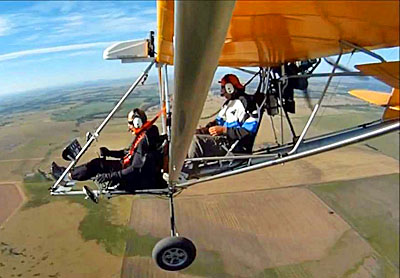
“With floats it can be used for Introductory Flights as a SLSA,” added Ed. Training pilots for towing required a second seat, though it is commonly, and easily, removed along with the aft joystick and pedals.
Interested in micro spraying? “My website has tax calculator link to see federal tax benefits,” reported Ed. (calculator is another website) Also some videos.
Get more info on this hard-working aircraft on Ed’s website, then click Rancher. Go here to see more of Dragonfly’s history.


Hello,
Can you tell me more, regarding crop dusting with the Dragonfly? A materials list and pricing would be great! I am purchasing a T-Bird ll, and plan to do small acreage crop dusting with it. Have a blesssd evening.
Hi Shaun: I do not have that information, but some companies might supply what you need. You are allowed to spray crops on your property but not on anyone else’s. You might try contacting Air-Tech Inc., a highly capable aftermarket supplier.